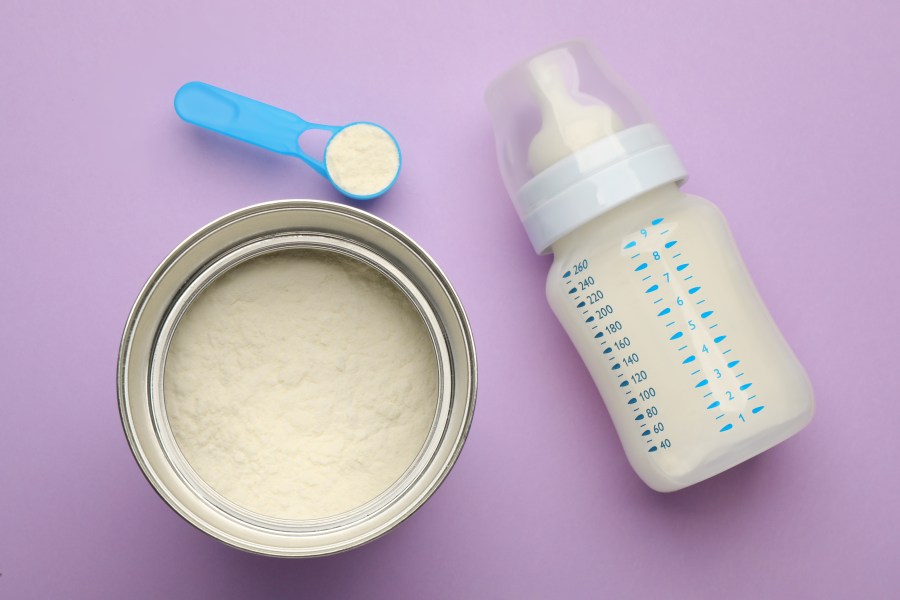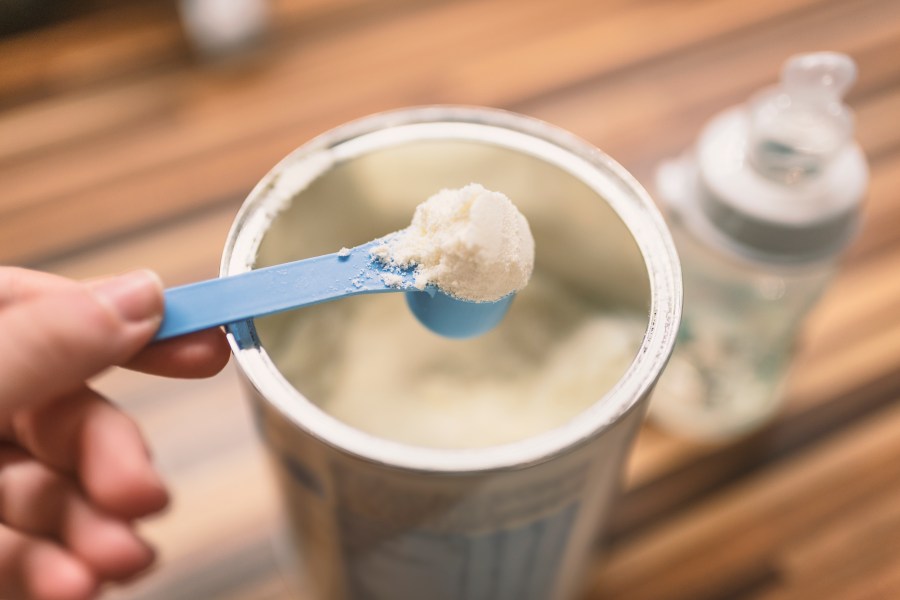TAMPA (BLOOM) – In the complex world of infant nutrition, understanding the ingredients in baby formula is crucial for parents. Mia Syn, a nutritionist and representative from The a2 Milk Company, provides insights into the common components of baby formulas and their implications on infant health.

Common Ingredients in Baby Formulas
- High Fructose Corn Syrup: Often used in baby formulas as a carbohydrate source, high fructose corn syrup is also a common sweetener in processed foods and beverages. Excessive intake can lead to obesity and other health issues.
- Maltodextrin: Derived from starch, maltodextrin is used in baby formulas for its energy-providing carbohydrates and texture-enhancing properties. However, its overconsumption might elevate blood sugar levels.
- Various Oils: Essential fatty acids in baby formulas are provided through oils like soy, coconut, and high oleic sunflower oil. The blend in baby formulas aims to mimic breast milk’s fat composition. Palm oil, however, has faced scrutiny for potential negative effects on calcium absorption and bone health in infants.
The history of baby formula is a fascinating journey through innovation, controversy, and evolving understanding of infant nutrition. Here’s a brief overview:
Early Beginnings
- Pre-19th Century: Before the invention of commercial baby formula, alternatives like wet nursing, animal milk, and homemade mixtures were used when breastfeeding was not an option. These methods varied in nutritional adequacy and safety.
- 1860s: The first commercial baby formula was developed by Justus von Liebig, a German chemist. It was a liquid mixture containing cow’s milk, wheat and malt flour, and potassium bicarbonate.
20th Century Advancements
- Early 1900s: The composition of baby formula evolved with the addition of vitamins and minerals, aligning more closely with the nutritional profile of human breast milk.
- 1950s-1970s: Powdered formulas became popular, offering convenience and longer shelf life. This era also saw the introduction of formulas for specific needs, like soy-based formulas for lactose-intolerant babies.
Controversy and Regulation
- 1970s-1980s: The aggressive marketing of baby formula in developing countries led to significant controversy. The Nestle Boycott (1977) was a response to concerns that formula was being pushed over breastfeeding, often in areas without safe water, leading to health issues for infants.
- Regulatory Changes: In response to such controversies, stricter regulations and guidelines for formula marketing and composition were introduced globally. The World Health Organization (WHO) Code of 1981 sought to regulate the marketing of breast milk substitutes.
Modern Developments
- 21st Century: Recent developments in baby formula focus on mimicking breast milk as closely as possible. This includes adding prebiotics, probiotics, DHA, and ARA to support infant development and immune health.
- Organic and Specialized Formulas: The rise of organic formulas and those catering to specific health conditions (like allergies or reflux) reflect growing consumer awareness and demand for tailored nutrition solutions.
Public Perception
- Early Perceptions: Initially, formula was seen as a scientific breakthrough that could liberate women and offer a safe alternative to breast milk.
- Shifts in Attitude: Over time, public perception shifted, with a renewed emphasis on the benefits of breastfeeding. Formula is now generally viewed as a necessary alternative rather than a superior option.
- Current Views: Today, the conversation around baby formula is nuanced, recognizing the importance of both breastfeeding and formula feeding depending on individual circumstances and emphasizing informed choice for parents.
Throughout its history, baby formula has mirrored broader changes in science, society, and attitudes towards infant care and women’s roles. Its evolution continues as research and technology advance, striving to provide the best possible nutrition for infants who need it.
Deciphering Formula Labels
Parents are advised to consult healthcare providers for formula selection. Iron-fortified formulas are standard for infants up to 12 months. The market offers cow’s milk-based, hydrolyzed, soy, and specialized formulas for specific needs.
Clean-Label Options
The Clean Label Project tests products for harmful chemicals, comparing them to California’s Proposition 65 list. Formulas meeting these standards receive certification, ensuring purity despite offering similar nutritional value as others.
Choosing the Right Formula
The American Academy of Pediatrics recommends cow’s milk-based formulas primarily. The a2 Milk Company’s a2 Platinum Premium Infant Formula is an example, made with fresh a2 Milk® and free of additives like palm oil and corn syrup. Budget and availability concerns can be managed through bulk purchases and programs like WIC.
As a nutritionist and expecting mother, Syn recognizes the importance of formula selection when breastfeeding isn’t an option. She emphasizes the necessity of finding suitable formulas for each child.

Addressing the Risks of Homemade Baby Formulas
Homemade baby formulas have garnered attention and concern from health professionals due to the risks they pose to infant health. Understanding these risks is crucial for parents considering alternatives to commercial formulas.
Nutritional Imbalance
- Inadequate Nutrition: Homemade formulas often fail to meet the specific nutritional requirements of infants. Commercial formulas are scientifically formulated to mimic breast milk’s nutrient profile, providing the right balance of proteins, fats, carbohydrates, vitamins, and minerals. Homemade versions can lead to deficiencies or excesses of certain nutrients.
- Growth Concerns: Inadequate nutrition can impede physical and cognitive development in infants. Essential nutrients like iron, vitamin D, and calcium are often insufficient in homemade formulas, leading to potential growth and developmental delays.
Health Risks
- Microbial Contamination: The risk of bacterial contamination is higher in homemade formulas. Commercial formulas undergo rigorous sterilization processes that are difficult to replicate at home, increasing the risk of infections like salmonella and E. coli.
- Allergic Reactions and Intolerances: Homemade formulas, often based on cow’s milk, nuts, or soy, can expose infants to allergens before their digestive systems are ready, potentially leading to allergies or intolerances.
Lack of Regulatory Oversight
- Unregulated Ingredients: Ingredients used in homemade formulas lack the regulatory oversight and quality control that commercial products undergo. This absence of standardization and safety checks raises the risk of contamination and inconsistency.
- Inaccurate Measurements: Precise nutrient ratios are critical for infant formula. Even small deviations in measurements can lead to significant nutritional imbalances, a challenge with homemade preparations.
Professional Recommendations
- Expert Advice Against Homemade Formulas: The American Academy of Pediatrics (AAP), the U.S. Food and Drug Administration (FDA), and other health organizations strongly advise against homemade infant formulas due to these risks.
- Seeking Alternatives: Parents seeking alternatives to commercial formulas due to allergies, dietary preferences, or other reasons should consult with a pediatrician or a pediatric nutritionist. These professionals can offer guidance on safe and nutritionally appropriate options.
While the desire to provide natural or customized nutrition for infants is understandable, the risks associated with homemade baby formulas make them a potentially unsafe choice. Parents are urged to consider these risks seriously and to seek professional guidance when exploring infant feeding options. The priority must always be the health and well-being of the baby.
Future Trends
The baby formula industry is expected to evolve, with formulas more closely resembling breast milk’s nutritional profile. The use of functional ingredients like prebiotics and probiotics could become more prevalent, enhancing the formula’s health benefits.







